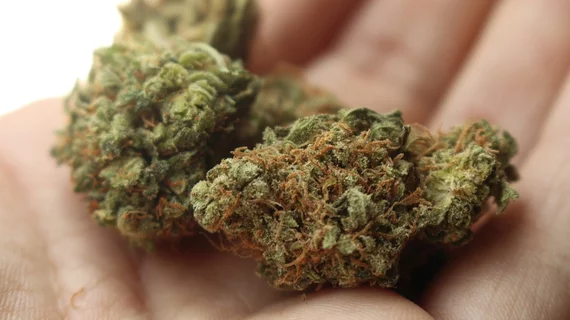Cannabis use tied to long QT syndrome, other arrhythmias in teens
Teens who use or abuse cannabis could be at risk for a number of cardiac arrhythmias, according to research published in the American Journal of Cardiology, including atrial flutter or fibrillation, palpitations and long QT syndrome.
Doctors Kamleshun Ramphul and Jyotsnav Joynauth, of Shanghai Jiao Tong University School of Medicine and Children’s Hospital Zhejiang University School of Medicine, respectively, said in AJC that while cannabis use is growing in popularity—especially among young people—there’s a paucity of data surrounding the relationship between marijuana and human electrophysiology. In fact, there’s a lack of information about the drug as a whole.
Cannabis use has made a comeback in recent years, owing largely to sweeping efforts across the U.S. to legalize the drug for medical and recreational use. But as these new regulations roll out, we’re left with little knowledge of how marijuana could affect our heart health.
Ramphul and Joynauth undertook a retrospective study of teens using the 2016 Kids’ Inpatient Database (KID), a registry supported by the Healthcare Cost and Utilization Project, Agency for Healthcare Research Quality and other partners. KID involves admissions data from over 4,000 hospitals in the U.S., though Ramphul and Joynauth restricted their study to teens aged 13 to 19.
The researchers utilized ICD-10-CM codes to define cannabis use, abuse and dependence, as well as ventricular fibrillation, palpitation, atrial flutter, atrial fibrillation, pre-excitation syndrome and long QT syndrome.
Ramphul and Joynauth noted 68,793 weighted cases of cannabis use, abuse and dependence in the 2016 KID database. Of those teenagers:
- 26 experienced ventricular fibrillation (37.8 per 100,000 cannabis users)
- 96 reported palpitations (139.5 per 100,000 users)
- 57 experienced pre-excitation syndrome (82.3 per 100,000 users)
- 80 were diagnosed with atrial fibrillation (116.3 per 100,000 users)
- 25 exhibited atrial flutter (36.3 per 100,000 users)
The most common arrhythmia in the study was long QT syndrome, which affected 353 patients, or 513.1 per 100,000 teen cannabis users. The authors said the mortality rate of teenangers who used, abused or depended on marijuana was 106.3 per 100,000 cases—a rate of 0.1%.
“There are multiple hypothesized pathways that can lead to cardiac arrhythmias among cannabis users,” Ramphul and Joynauth wrote in their paper. “Adrenergic stimulation and atrial ischemia from cannabis use can lead to atrial arrhythmias while catecholamine surges have been linked with ventricular fibrillation. Long QT syndrome can be seen in cannabis users due to blocking of the hERG channels.
“This study provides a new perspective on the prevalence of cardiac arrhythmias among teenagers using cannabis.”

